15 Remarkable Facts About Diamonds
Besides the heart and the rose, there aren’t too many other symbols that
express one’s love more for another person than the sparkling and durable stone
of the diamond. The gleaming and glistening gem, which is the consummate
engagement symbol, is also a noted emblem of status and wealth. Therefore, it’s
not surprising that this remarkable token of love and prestige is notably one of
the most amazing substances on the planet. The following information underscores
the gem’s properties, uses and history.
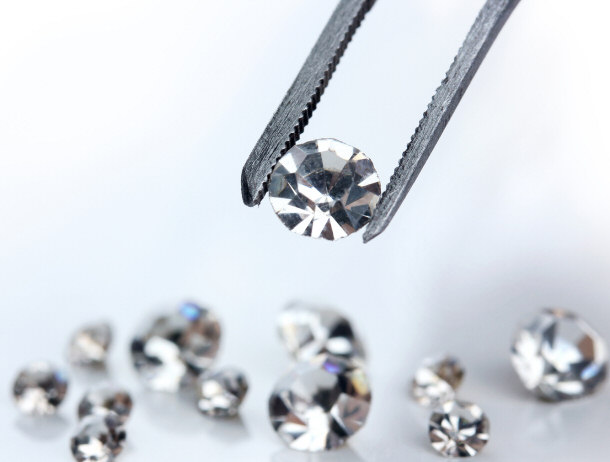
15) The First Diamond Engagement - 1477
The first ever documented use of a diamond ring for an engagement was way
back in 1477 when Maximilian I (1459 – 1519), Archduke of Austria offered
the diamond to his lady love when he proposed to Mary of Burgundy (1457 - 1482).
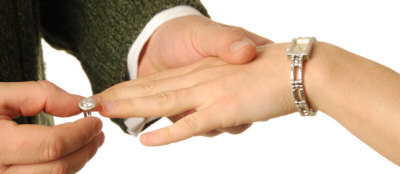
He presented Mary with a diamond ring as an assurance of his commitment to her,
thus inadvertently establishing a tradition that has continued throughout the
centuries.
Mary of Burgundy Circa 1490:

14) The World’s First Single-Faceted 150-Carat Diamond Ring
In 2012, the Swiss jeweler, Shawish, unveiled the world’s first
single-faceted 150-carat diamond ring. The stunning gem, which was produced by
altering a single diamond, is estimated to be worth around $70 million.
The Entire Ring is Made From a Single Diamond:
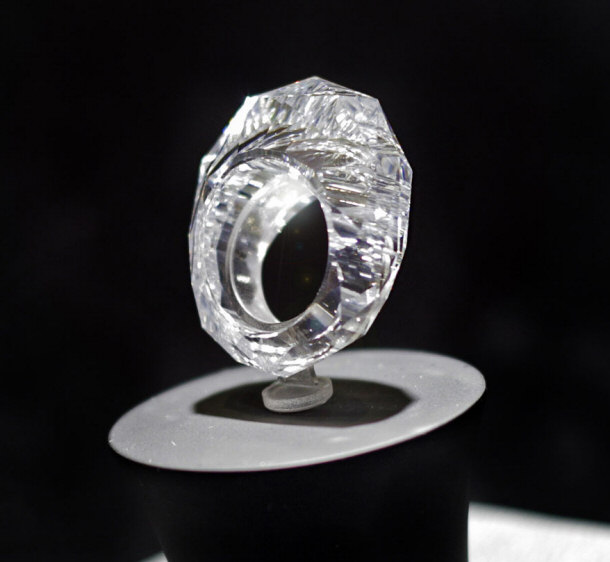
Mohamed Shawish, the CEO and President of the Geneva-based jewelry company,
decided to take on the challenge of producing the diamond, referring to the
undertaking as a labor of love. Development began in 2010, when Shawish obtained a
copyright on the design of the ring. This was soon followed by numerous tests to
ensure the precision of the design. Shawish then bought special laser equipment
to meticulously cut the stone. The inspiration behind the work, which was
largely art-related, produced a stone that was thought, before 2012, impossible
to achieve.
13) South Africa’s First Diamond Discovery – The Eureka Diamond (Found by a
Farm Boy)
Because of the number of diamonds that have been mined in South Africa, the
country is a popular venue for mining the gem. However, the very first diamond
that was discovered in the country was found by a farm boy who did not realize
the worth of the stone.
Eureka Diamond - Cushion-Shaped brilliant cut - 10.73 Carat
- Brownish-yellow Diamond:
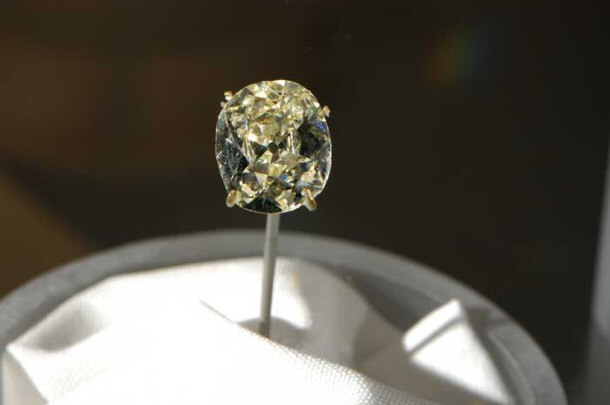
The 21.25 carat diamond, which would later become known as the “Eureka
Diamond,” was discovered by a 15-year-old boy named Erasmus Jacobs in 1867. He
found it near Hopetown on the Orange River. Jacobs took the jewel home and was
using the stone in a game with friends when a neighbor spotted it and asked the
boy’s mother if he could have it. Not realizing its incredible value, Jacob’s
mother simply gave it away.
The neighbor promptly gave the diamond to the Civil Commissioner, with the
gem ultimately ending up in the possession of Queen Victoria. In 1867, the
monarchy displayed the jewel at the Paris Exhibition. A hundred years after it
was discovered, the Eureka Diamond was donated back to the people of South
Africa. The fabulous gem is currently displayed in the nation’s Kimberley Mine
Museum.
12) Artificial Diamonds – An Idea of H.G. Wells
Legendary science fiction writer H.G. Wells (21st September 1866 – 13th
August 1946) was one of the first people to suggest that it was possible to
create an artificial diamond. He documented his theory in the early 1900s in his
story, “The Diamond Maker.”
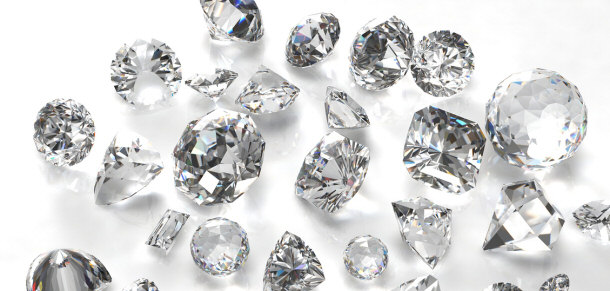
H.G. Wells Prior to 1922:

Inspired by the ideas set forth in the writing,
numerous scientists tried to produce an artificial gem. However, researchers
weren’t able to create any man-made gemstones that could fool the keen eye of
diamond appraisers at the time.
11) Naturally Occurring and Cultured Diamonds are Hard to Distinguish by
Jewelry Experts
The manufacture of diamonds has come a long way since scientists first tried
to embark on the technology. During the last decade, the science has advanced to
the point that researchers have now perfected a process known as Chemical Vapor
Deposition. This remarkable technology can actually grow diamonds in a matter of
days.
DC Plasma (violet) Increases Diamond Output in Chemical
Vapor Deposition Chamber:
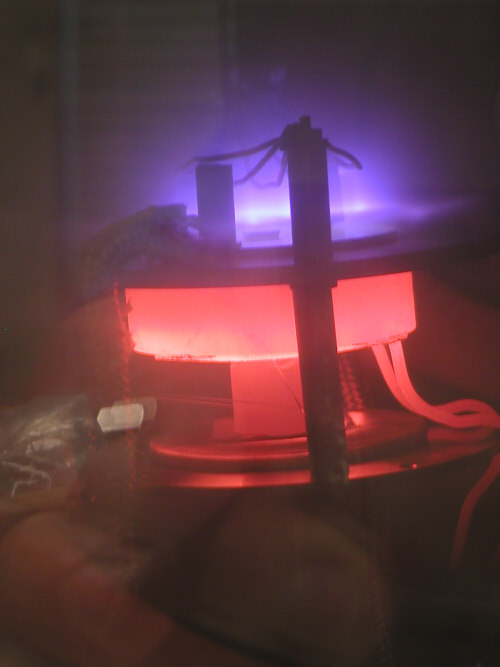
Hot-wall Chemical Vapor Deposition System:

Amazingly, very few experts can tell the difference between naturally
occurring diamonds and the gems that are cultured as the result of the
technology.
Plasma Chemical Vapor Deposition System:
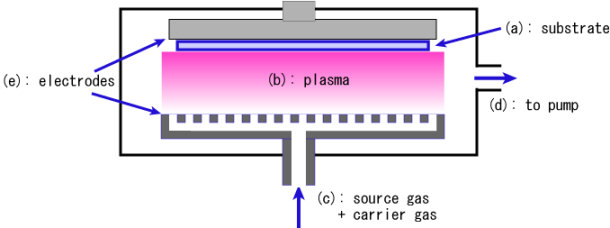
Rose-cut Synthetic Diamond Created by Using a Chemical
Vapor Deposition Process:
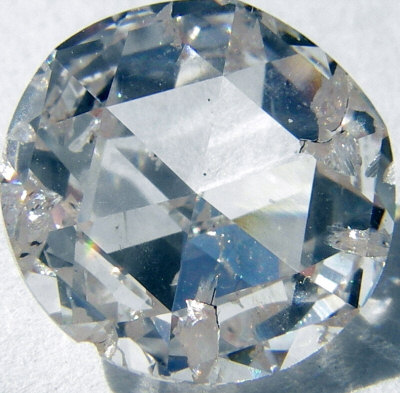
By Steve Jurvetson
via Wikimedia Commons
10) A Diamond Studded Teabag That’s Worth Thousands of Pounds
In 2005, executives at tea manufacturer PG Tips were looking for an
elaborately grand way to celebrate the company’s 75th anniversary. That’s when
they came up with a spectacular promotional idea. Corporate gurus decided to
serve up a very expensive tea bag studded with diamond accents.
PG Tips Diamond Studded Tea Bag:
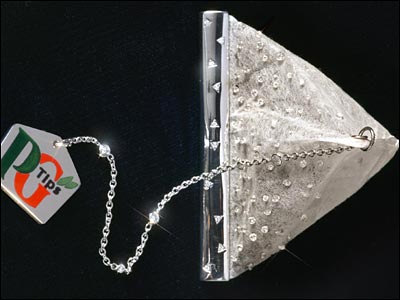
The bag showcased 280 small diamond adornments and was valued in the
thousands of pounds. According to a spokesperson for the English company, PG
Tips felt that the ornamental tea bag was the best way to celebrate the
company’s anniversary as well as pay tribute to its customers in the UK, all who
follow the English tea-drinking tradition and consume copious amounts of tea.
PG Tips Brand Loose Tea:

By LoopZilla
via Wikimedia Commons
Runners-up in the competition received a specially made limited edition diamondless teapot.
9) The Mir Diamond Mine – Not a Good Place to Fly Over
The Mir Diamond Mine in Siberia is the second largest diamond mine in the
world. The excavation is over 3,900 feet wide and more than 1,700 feet deep. A
combination of explosives and jet engines were required to cut into the site's
permafrost and create the massive hole of the mine.
Open Pit Diamond Mine in Yakutia Has a Depth of 525 Meters:
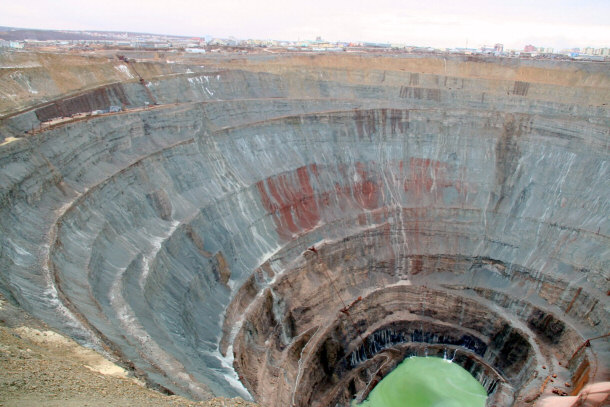
By Vladimir
via Wikimedia Commons
In fact, the mine is so big that the downward air flow that it generates has,
on several occasions, actually sucked helicopters down into it and caused
serious accidents. The airspace above the mine has since been ruled off-limits
to all types of aircraft.
Mir Mine or Mirny Diamond Mine:

By Staselnik
via Wikimedia Commons
8) Most Diamonds are Used in Industrial Applications, Not in Fine Jewelry
While most people would assume that the majority of diamonds are used in
elaborate and expensive jewelry, the reality is that most diamonds (about 80% of
them) are actually used for industrial reasons throughout the world.
Specifically, diamonds are most commonly used for drilling, cutting, polishing
and/or grinding purposes.
Close-up of a Diamond Blade:
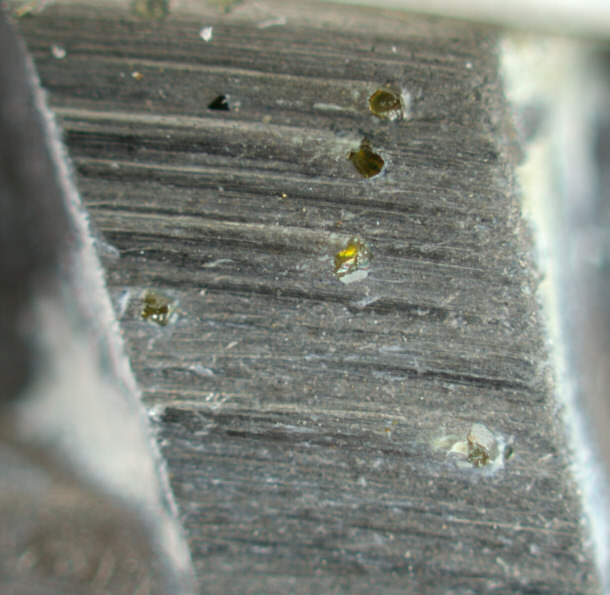
By Hustvedt
via Wikimedia Commons
What’s really remarkable about this fact is that the earliest of humankind
employed diamonds for some of the same reasons. In 2005, Harvard physicist Peter
Lu and his team discovered that the ancient Chinese used diamonds to polish
their ceremonial weaponry.
Diamond Knife Blade Edge:
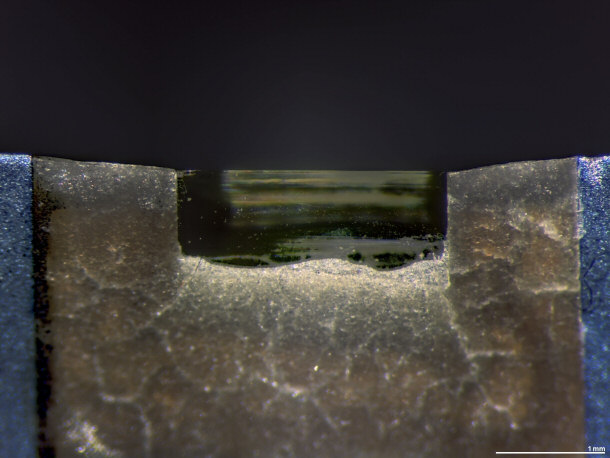
By Zephyris
via Wikimedia Commons
From as far back as 2500 BC, Chinese warriors used the diamond to add sparkle
to their armament. Among naturally occurring substances, corundum, which was
used to make the weapons, is second only to the diamond in hardness and
strength.
7) The Diamond is the Hardest Naturally Occurring Substance, but Isn’t the
Hardest Substance on Earth
There is a long held belief that diamonds are the hardest substance on the
planet. While the gem is the hardest naturally occurring substance, it isn’t the
hardest substance in and of itself.
Pyramidal Diamond Anvil Impactor on Vickers Hardness
Tester:
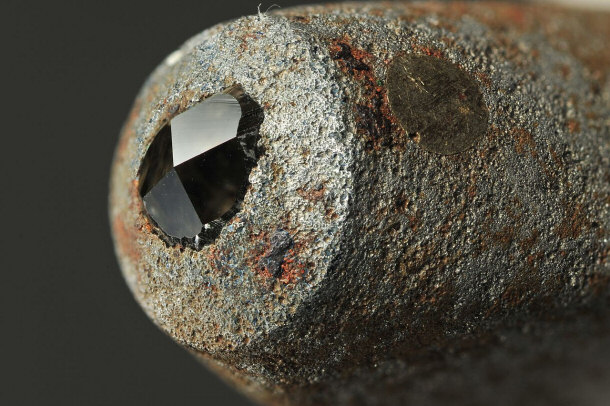
By R. Tanaka
via Wikimedia Commons
In 2005, physicist Natalia Dubrovinskaia and her team managed to create
aggregated diamond nanorods. By compressing carbon fullerene molecules and
heating them at the same time, the researchers managed to produce a series of
interconnected rods that formed a substance – basically, a “hyper-diamond” –
that is around 11% harder than a diamond stone.
6) Your Loved One’s Remains Can be Turned into a Diamond that You Can Wear
Although you may find the technology to be rather macabre, some companies,
such as Everlasting Memories and Life Gem, offer to convert one’s remains into
diamonds. The gemstones, known as memorial or cremation diamonds, are made from
cremated ashes.
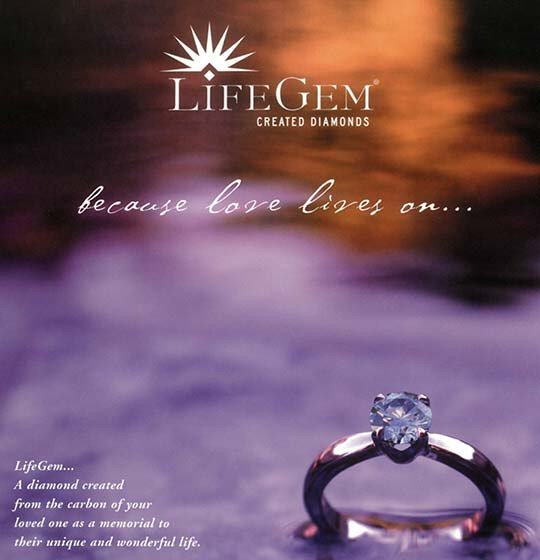
Touted as being of the highest quality, the stones, considered creepy by some
while poignant by others, are usually derived from the ashes of the deceased’s
hair. The wearer of the gem can select from such colors as blue, green, yellow,
red, or traditional white.
After the process is completed, the gems can be set in a ring, necklace or
earrings for a family member to wear and display.
5) Diamonds Can Fall From the Sky
Don’t get your hopes up because it’s incredibly rare, but it is a fact that
diamonds can fall from the sky. The heaven-sent stones descend as meteors into
the earth’s atmosphere. Scientists realized this phenomenon in 1981 when a group
of researchers attempted to cut open a meteorite that had landed in Antarctica.
However, they found that they could not incise the rock.
Meteorites Can Contain Microscopic Diamonds:

When they examined the meteorite with an X-ray then, they discovered that the
shooting star was filled with microscopic diamonds. Scientists speculated that
the diamonds formed as the comet collided with other objects as it sped through
asteroid belt.
Enlargement of the Abee Meteorite - Scattered Throughout
are Microscopic Diamonds:
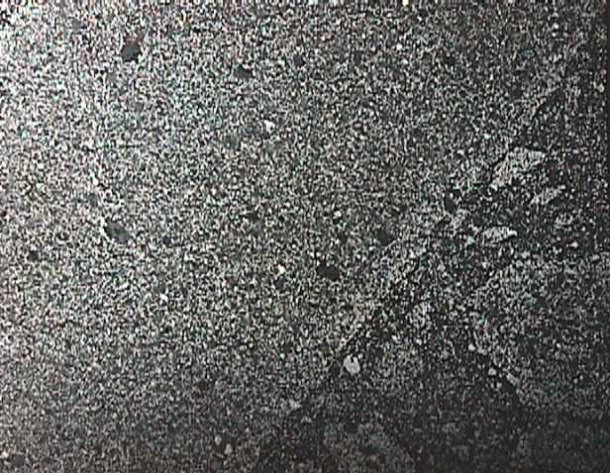
A number of other similar cases involving diamonds and meteorites have since
emerged. In some instances, however, the diamonds weren’t formed in space but
rather when the meteorite hit the ground. Interestingly, space and earth
diamonds differ in form as the diamonds created from outer space are hexagonally
shaped while their earthen counterparts take the familiar form of the diamond
shape.
4) It Doesn’t Rain Cats and Dogs on Uranus and Neptune – Instead, it Rains
Diamonds!
The surfaces of the planet Uranus and Neptune are littered with diamonds, so
much so that the planets have accumulated diamond piles that are several miles
deep. Because both planets contain a lot methane in their incredibly dense and
hot atmospheres (temperatures hover around 12,000 degrees Fahrenheit), rain is
produced in diamond form.
Uranus:

Neptune:

The atmospheric pressure, which is 6,000,000 times that of the earth’s,
causes the methane in each planet’s environment to turn into diamonds whenever
there’s a rainy spell.
3) Diamonds Can Be Made From Peanut Butter
In 2007, in an attempt to discover new and easier ways of making diamonds
caused researchers to stumble on a serendipitous discovery. The scientists found
that peanut butter could be used to make diamonds. Basically, most things with
carbon can be turned into diamonds, if enough pressure is applied and the
temperature is just right.

However, the kind of pressure that would need to be created would be the type
that be equal to a meteor impact. Nevertheless, researchers at Edinburgh
University’s Center for Science and Extreme Conditions were able to replicate
such extreme conditions. Led by Professor Malcolm McMahon, researchers
discovered they could produce a diamond by what is known as the “stiletto heel
effect.” In the experiment, researchers squeezed a small sample of peanut butter
between the tips of two diamonds in order to realize the effect.
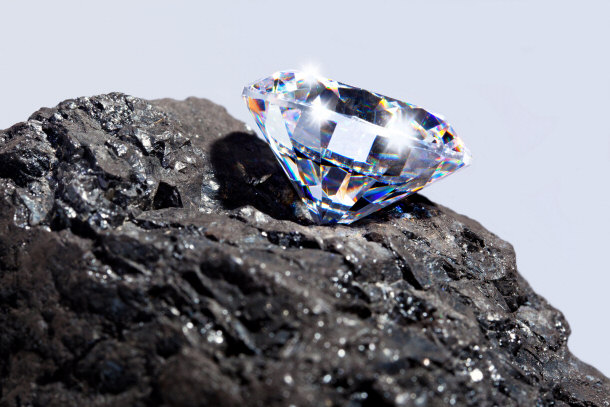
Again, a variety of substances that contain carbon can be used to produce
diamonds and peanut butter is just one of them. Obviously, if you apply enough
pressure to certain elements, amazing things can be achieved.
2) A Diamond Star Exists!
In 2004, astronomer Travis Metcalfe of the Harvard-Smithsonian Center for
Astrophysics and his colleagues discovered a star that is an astounding ten
billion trillion trillion carat diamond. The solar gem is located 50 light years
away from Earth in the constellation Centaurus.
Metcalfe and his team jokingly named their discovery “Lucy,” in reference to
the famous song by the Beatles, “Lucy in the Sky with Diamonds.” Lucy is
technically a white dwarf, which is a remnant of a star which has died and
crystallized.
BPM 37093 - The Diamond Star:
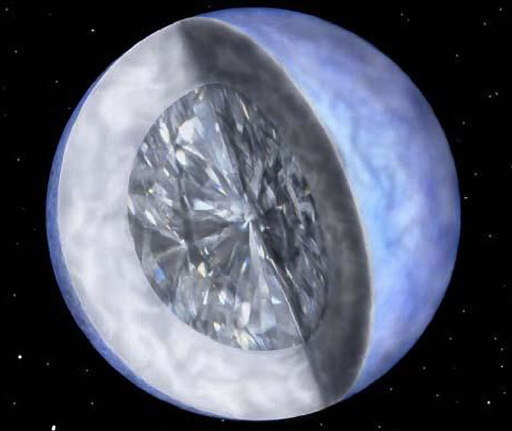
Officially called BPM 37093, Lucy is nearly 2,500 miles wide. Scientists had
speculated for years as to whether a white dwarf’s core would crystallize. The
discovery of Lucy confirmed their suspicions. That means there is a good
possibility that there are countless planet-sized diamonds located throughout
the universe. Our own sun is expected to die eventually and will also become a
white dwarf in about 5 billion years.
1) Candle Flames Are Made Up of Tiny Diamonds
In 2011, chemistry professor Wuzong Zhou of the University of St. Andrews
made the astounding discovery that a candle’s flame produces approximately
1,500,000 diamond nanoparticles per second. These particles ultimately burn up
and convert into carbon dioxide.

Zhou made the discovery after he was challenged by a peer from another
university to determine the composition of a candle’s flame. Utilizing a new
sampling technique, which he developed, Zhou managed to remove certain particles
from the flame, which was also the first time for such an achievement.
Zhou discovered that the flame contained all four known forms of carbon.
While it was already known that a flame consists of hydro-carbon molecules at
the bottom and that they are turned into carbon dioxide at the top, Zhou
discovered diamond nanoparticles in the center of the flame.
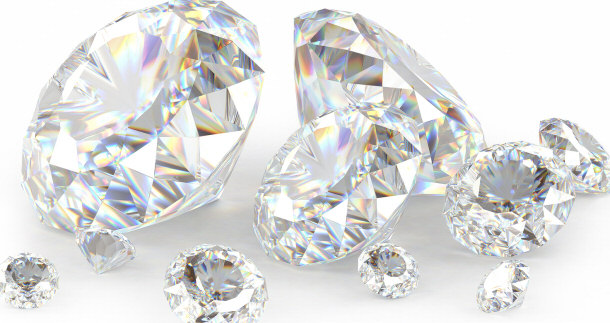
Although Zhou managed to take a sample of the diamond nanoparticles, there’s
currently no way of extracting them. Just how the diamonds are produced by the
flame is unclear. However, the discovery may open the door in the future to the
more efficient production of diamonds at a lower cost.
Conclusion
With certain technological advancements in place, diamonds of exceptional
quality can now be produced. Although you might believe that the gem’s intrinsic
worth will decline if it’s made by artificial means, it’s highly unlikely that
using certain technologies will negatively affect a diamond’s worth now or in
the future.
Whether a diamond is naturally occurring or not, the rock is still remarkably
valuable, given its ubiquitous use in the industrial fields of work.
Furthermore, the diamond has a sentimental and symbolic worth attached to it.
Therefore, the influence that is exerted by the sparkling gem will always make
carbon a highly prized element and the diamond a treasure on Earth as well as in
space.
Jewelry
15 Remarkable Facts About Diamonds
Charm Bracelets: Origin and Design Meanings
Jewelry Through the Ages
|